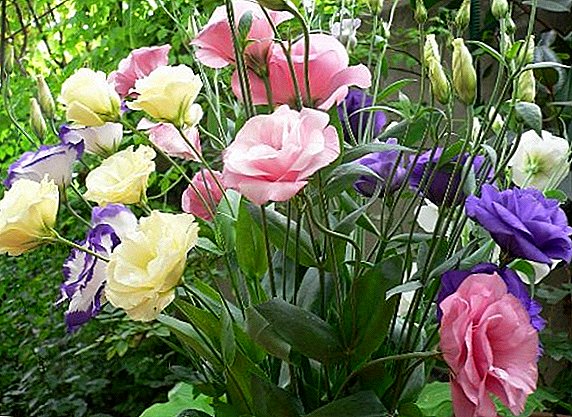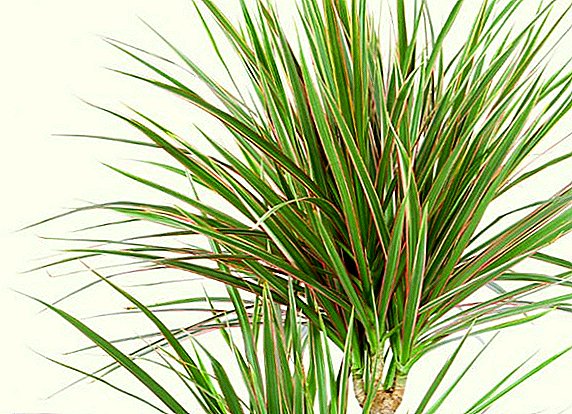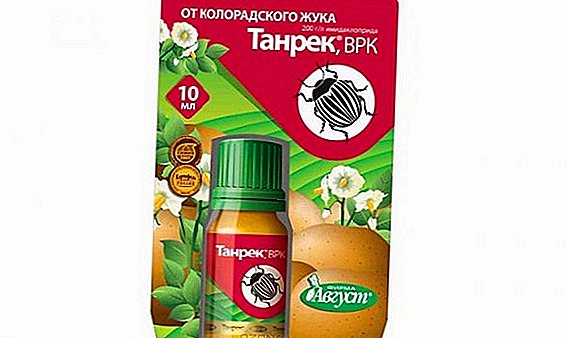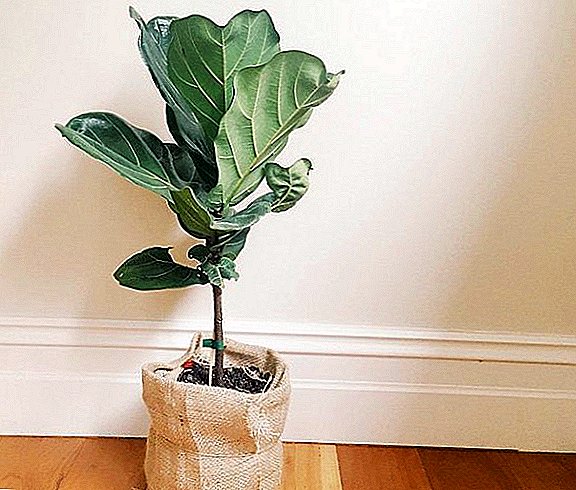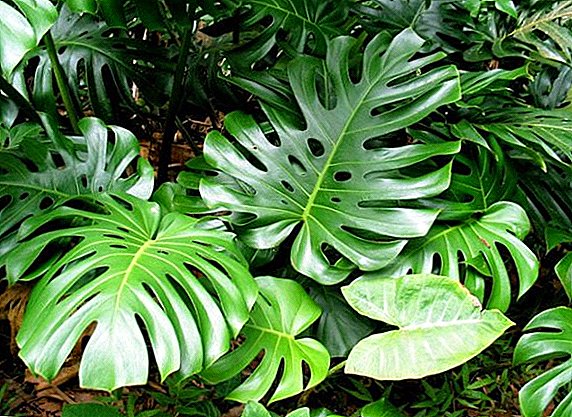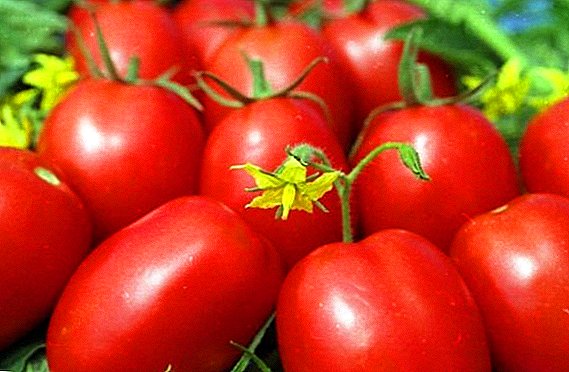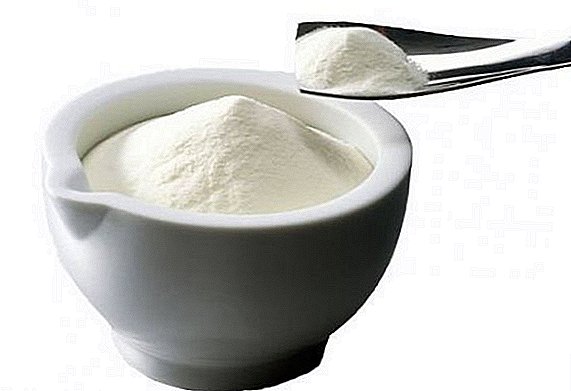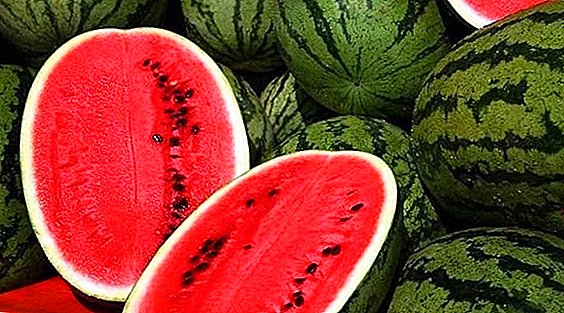 Perhaps, since childhood, everyone knows such a juicy and big berry like a watermelon. And, most likely, having heard the name of this plant, the vast majority of people imagine the red juicy flesh with black seeds, framed by green peel. This is the most common variety of this berry - Astrakhan. It is he who prevails in the stores and markets.
Perhaps, since childhood, everyone knows such a juicy and big berry like a watermelon. And, most likely, having heard the name of this plant, the vast majority of people imagine the red juicy flesh with black seeds, framed by green peel. This is the most common variety of this berry - Astrakhan. It is he who prevails in the stores and markets.
However, in addition to the classic, in our view of the Astrakhan variety of watermelons, you can find others who differ not only in appearance, but also in taste. If you delve into the topic, we know more than 1200 varieties of this plant. Some of them are similar, but there are some of the most exclusive varieties of watermelon.
Did you know? Watermelon is 92% water. Therefore, in the summer heat there is one pleasure. Also, according to research, after an intense workout, watermelon more effectively saturate the body with moisture than the same glass of water.
Black watermelon
 One of the most exclusive varieties of watermelon is Densuke. It has a round shape, a glossy black peel, but is devoid of the usual "watermelon" strips. The flesh of such a watermelon is bright red and sugar sweet.
One of the most exclusive varieties of watermelon is Densuke. It has a round shape, a glossy black peel, but is devoid of the usual "watermelon" strips. The flesh of such a watermelon is bright red and sugar sweet.
Black watermelon is grown only in one place on the planet - in Japan, on the island of Hokkaido. Brought this variety in the mid-1980s in the city of Tom. It is considered an exclusive species, due to limited crop. In this regard, today, black watermelon is the most expensive berry in the world.
On average, 10,000 pieces of this sort of watermelon are harvested per year. Not many people can afford to buy it, because the cost of a berry is about $ 250. It can also be purchased at world auctions, where there have been cases of selling such watermelons for $ 3200- $ 6300 apiece.
The Japanese decided not to stop there and brought out varieties of black watermelon - without seeds and with yellow flesh. But they are no longer considered the original Densuke black watermelon variety.
Shuga baby
 Sugar baby (Sugar baby) is considered the oldest and most popular early watermelon in the world. Seeds are sown at the end of April, and 75-85 days pass from the moment of emergence to ripening.
Sugar baby (Sugar baby) is considered the oldest and most popular early watermelon in the world. Seeds are sown at the end of April, and 75-85 days pass from the moment of emergence to ripening.
Watermelon sludge baby has a round shape, a peel of dark green color with dark stripes and bright red flesh. The flesh of this watermelon is very sweet, tender and grainy, and the small seeds in it are few and have a black color. Weight of berries, on average, is 3.5-4.5 kg.
Variety watermelon Sugar baby can be grown in the northern regions, as it is very unpretentious. Requires moderate watering, which is especially important in the ripening period. The variety is grown in film greenhouses. In culinary terms, Shuga baby is good for salting.
Important! If yellow streaks are noticeable in the watermelon cut, there is a high probability of the presence of nitrates. These chemicals can cause severe poisoning of the human body.
Yellow watermelon with green skinned
 Yellow watermelon was obtained by crossing a common watermelon with a wild one. Thus, it turned out that apparently this berry looks no different from ordinary watermelon, but the flesh has a rich yellow color. There are very few pits in this sort of watermelon. The fruits of yellow watermelon are round and oval.
Yellow watermelon was obtained by crossing a common watermelon with a wild one. Thus, it turned out that apparently this berry looks no different from ordinary watermelon, but the flesh has a rich yellow color. There are very few pits in this sort of watermelon. The fruits of yellow watermelon are round and oval.
Thailand is considered the homeland of this green-skinned variety, but they are also very popular in Spain. Breeders brought a variety whose skin has a green color with mild strips, and the flesh is characterized by a yellow color (caused by a large number of carotenoids that affect cell-to-cell metabolism).
Yellow watermelon is of great interest for people on different diets. Its caloric content is only 38 kcal. The composition of the berries includes a lot of vitamin A, folic acid, calcium, iron. In this regard, this variety is considered to be beneficial to health: improves the state of vision, strengthens the immune system, improves the condition of nails and hair, benefits people suffering from anemia and anemia.
Square watermelon
 A strange watermelon for many people is not a miracle of genetic engineering or selection. In fact, they are formed from the fruits of ordinary varieties. How to form a berry in such a form came up in the 1980s in Japan. The authors of the idea just wanted to make transport of watermelons more convenient.
A strange watermelon for many people is not a miracle of genetic engineering or selection. In fact, they are formed from the fruits of ordinary varieties. How to form a berry in such a form came up in the 1980s in Japan. The authors of the idea just wanted to make transport of watermelons more convenient.
When the watermelon reaches about 6-10 cm in diameter, it is placed in a transparent plastic cube box. Square Japanese watermelons require a lot of attention, and farmers spend a lot of effort, because each instance must be taken care of separately.
The trouble is that the watermelon needs to be adjusted in such a way that the stripes are nicely arranged along the edges. It is necessary to monitor the timeliness of irrigation and fertilizer to the watermelon was the right size. It is important not to miss the time when the berry is ripe, as it should not grow too big. Otherwise, not only the watermelon itself will crack, but also the box in which it developed.
Due to the fact that standard boxes of the same size are used for growing square watermelons, fruits often do not ripen. After all, watermelon berries tend to have a different size from nature. It turns out that the taste of this watermelon is not always good. So if you need a tasty and juicy watermelon, you are more likely to choose it among the fruits of round shape.
Marble Watermelon
 Marble watermelon is called so because of the pattern on its skin - dark green streaks on a light background. There are several varieties of marble watermelon. For example, French breeders bred the Charleston Gray variety, and Russian breeders - the Honey Giant. The culture itself is resistant to diseases and easily tolerates droughts.
Marble watermelon is called so because of the pattern on its skin - dark green streaks on a light background. There are several varieties of marble watermelon. For example, French breeders bred the Charleston Gray variety, and Russian breeders - the Honey Giant. The culture itself is resistant to diseases and easily tolerates droughts.
Marble watermelon, often, has an oblong shape and weighs from 5 to 15 kg. The flesh of such a watermelon is pink or red and contains very few seeds. The taste of marbled watermelon is superb.
Marble watermelons can be stored for a long time and tolerate transportation.
Did you know? Watermelons are credited with many beneficial qualities due to which this berry has a beneficial effect.on the human body. Watermelon has fibers that promote good digestion and intestinal motility. Due to saturation with potassium, nitric oxide and lycopene, watermelon is also useful for kidney function.
Watermelon "Moon and stars"
 Watermelon "Moon and stars" got its name due to the external color. The peel has a dark green color, on which yellow spots appear. Small spots are stars, large spots are small moons. Foliage also has yellow spots.
Watermelon "Moon and stars" got its name due to the external color. The peel has a dark green color, on which yellow spots appear. Small spots are stars, large spots are small moons. Foliage also has yellow spots.
Fruits grow quite large, up to 7-14 kg. The ripening period, from shoot to ripeness, is 90 days. The flesh of the fruit is juicy and fragrant. The color of the pulp of this variety is both red and yellow.
White watermelon
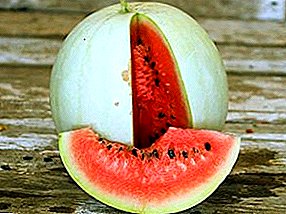 Another unusual kind of watermelons - white watermelon. American Navajo Winter watermelon has almost white skin. The flesh in this watermelon is pink and red, but in any case, very sweet and crispy. The variety is drought resistant. Fruits can be stored for up to 4 months
Another unusual kind of watermelons - white watermelon. American Navajo Winter watermelon has almost white skin. The flesh in this watermelon is pink and red, but in any case, very sweet and crispy. The variety is drought resistant. Fruits can be stored for up to 4 months
White, such watermelons are not only the color of the skin, but also the color of the flesh. The white flesh of watermelon looks very strange, at least for most people. Such a hybrid species is obtained by crossing wild and cultivated varieties.
Red watermelon with yellow skinned
 There is an unusual watermelon that has red flesh and yellow peel. The variety is called "Gift of the Sun" and was bred in 2004. The peel has a golden yellow monochromatic color, or complemented by noticeable orange stripes. The flesh is bright red, juicy, grainy, tender and very sweet. Seeds are black. Externally, the "Gift of the Sun", because of the yellow skin, looks more like a pumpkin.
There is an unusual watermelon that has red flesh and yellow peel. The variety is called "Gift of the Sun" and was bred in 2004. The peel has a golden yellow monochromatic color, or complemented by noticeable orange stripes. The flesh is bright red, juicy, grainy, tender and very sweet. Seeds are black. Externally, the "Gift of the Sun", because of the yellow skin, looks more like a pumpkin.
From the moment of shoot, the berry ripens at 68-75 day. The mass of round fruits reaches 3.5-4.5 kg.
Important! The fruit pumped up by nitrates, even after removal from a bed, continues to change inside. Fabrics quickly turn red, and streaks become yellow. After a few weeks, the flesh inside the berry becomes friable, thin and crumbly. There are dangerous watermelons, because they can cause negative effects on human health (contain chemicals).
The smallest watermelon in the world
 The smallest watermelons in the world were created by nature itself. So, in South America grow wild plants, the fruits of which are small watermelons. Their size is only 2-3cm. The smallest watermelon in the world is called Pepquinos.
The smallest watermelons in the world were created by nature itself. So, in South America grow wild plants, the fruits of which are small watermelons. Their size is only 2-3cm. The smallest watermelon in the world is called Pepquinos.
In addition to the unusual appearance, these watermelons have an unusual taste. They are more like cucumbers, therefore, expensive restaurants offer them to their customers as a snack, or add to summer salads.
Since 1987, Pepquinos were imported to Europe and began to grow here. The plant grows in 2-3 months and begins to bear fruit - 60-100 watermelons.
The biggest watermelon
 The biggest watermelons, since 1979, are grown on their farm by American Lloyd Bright. In 2005, he broke all previous records, growing a watermelon weighing 122 kg. Variety of watermelon, which managed to grow to such sizes - "Carolina Cross". Usually, the berries of this variety reach 16-22 kg and ripen in 68-72 days.
The biggest watermelons, since 1979, are grown on their farm by American Lloyd Bright. In 2005, he broke all previous records, growing a watermelon weighing 122 kg. Variety of watermelon, which managed to grow to such sizes - "Carolina Cross". Usually, the berries of this variety reach 16-22 kg and ripen in 68-72 days.
Watermelon ripened on a bed of 147 days, which is 2 times longer than the ripening period of a usual watermelon of this variety. However, this is not surprising, especially when you consider how many times he surpassed his relatives in size. The taste of "Carolina Cross" was very sweet, if, of course, believe the words of eyewitnesses who tried this watermelon.
However, in 2013, a new record was recorded. In Tennessee, accountant Chris Kent raised a fruit that weighs 159 kg. Also this giant watermelon became the champion in circumference.


